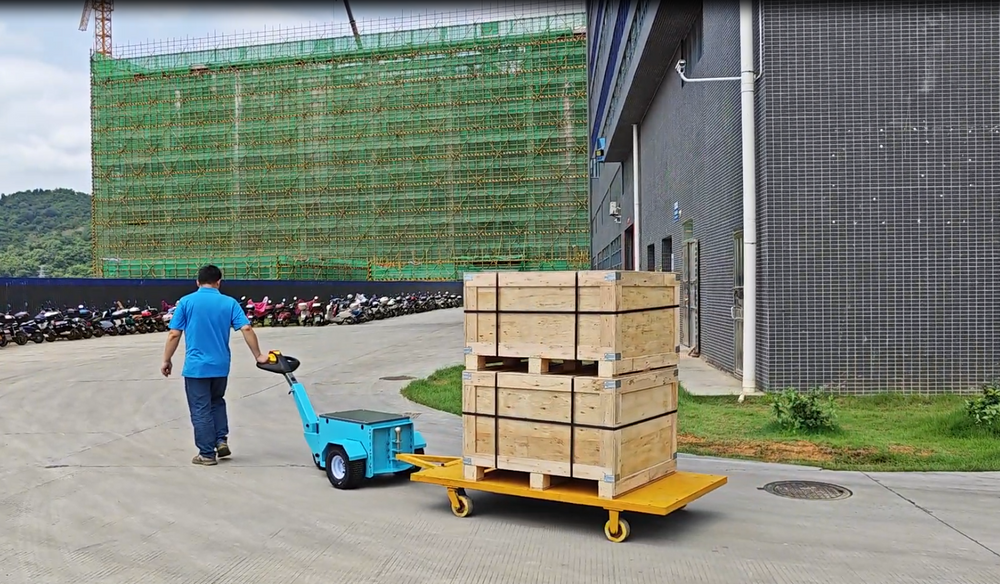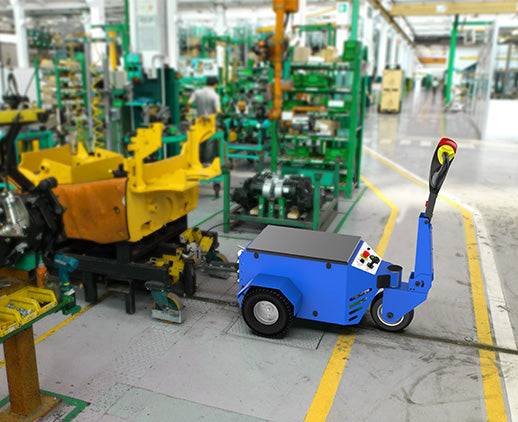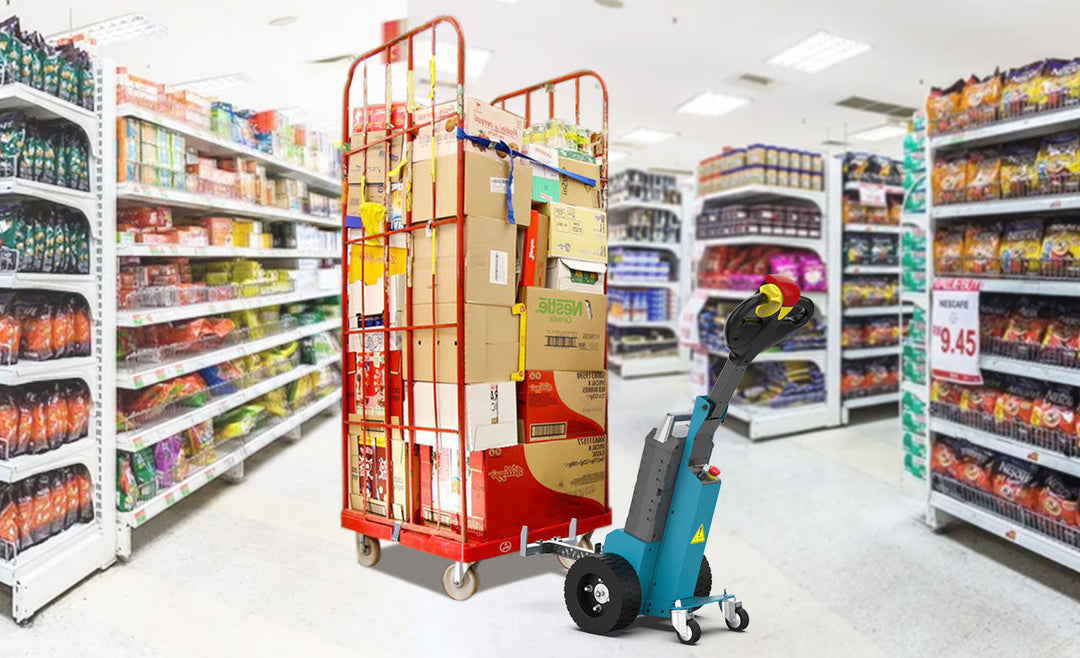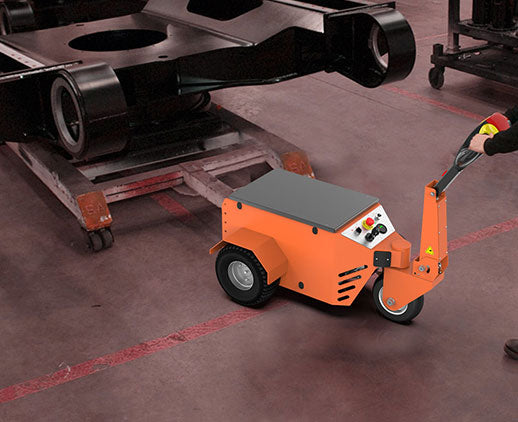How to customize electric tug for specific needs
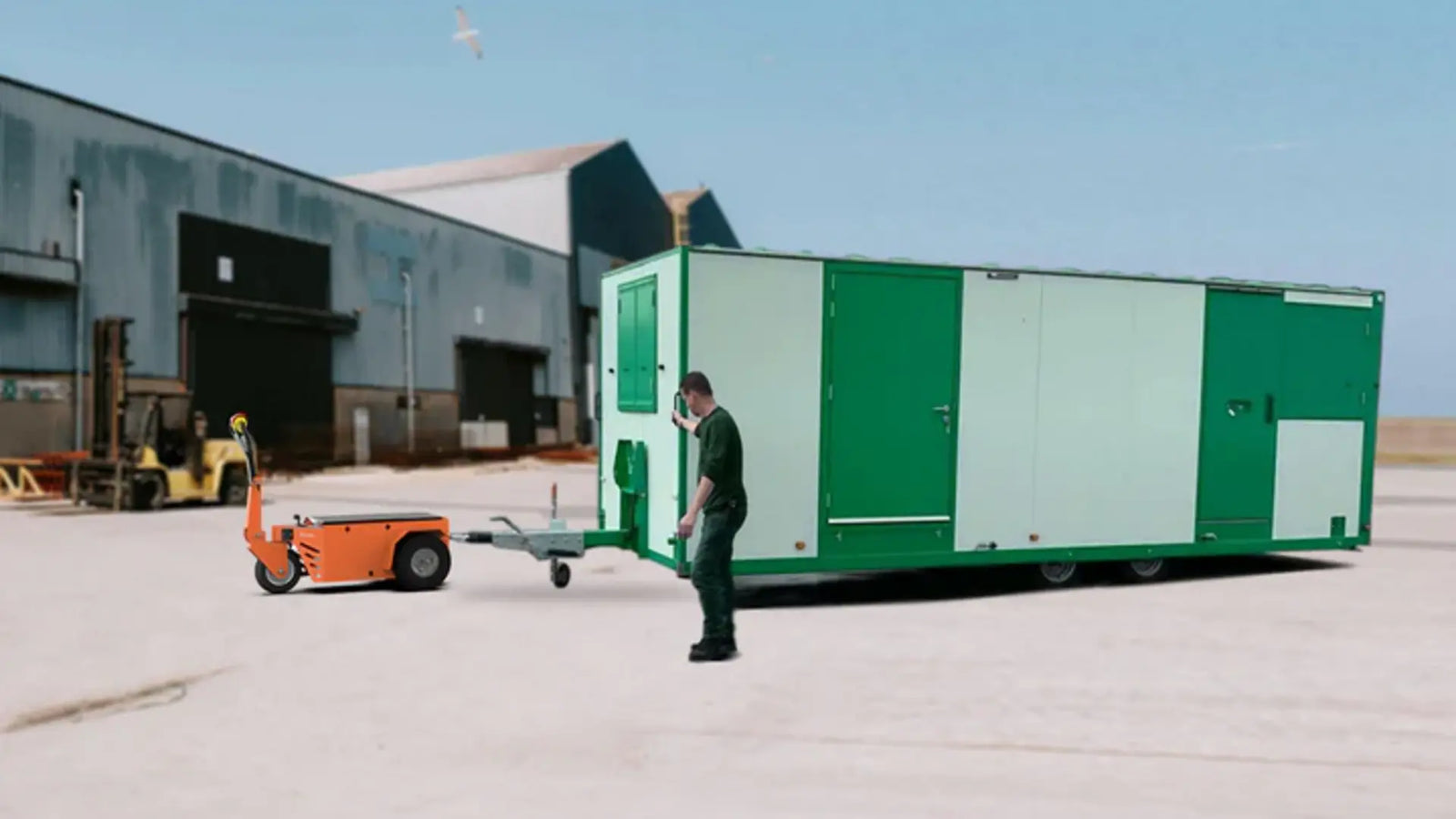
Electric tugger attachments customization is not simply "mold fitting," but precise engineering adaptation to match scenarios. Handling 23 airport logistics projects found that 90% of customer demands focus on three modifications: forklift adapters, refrigerated box brackets, explosion-proof modules. Take BOE’s 2023 Q3 semiconductor workshop modification as an example, requiring tuggers to transport wafer boxes in a cleanroom environment (temperature 23±1℃/humidity 50%±5%). The team adopted a 6061-T6 aluminum alloy frame + polyurethane buffer layer, combined with ISO 3691-2020 anti-static standard, improving transportation efficiency by 35%, reducing collision accident rate from 1.2 times per month to 0.8 times per 1,000 hours.
Core parameters must follow material characteristics. Cold chain transport commonly uses -18℃ environment tuggers, if directly using ordinary steel hooks, thermal expansion and contraction (coefficient of linear expansion 11.7×10⁻⁶/℃) will cause fasteners to loosen. "Journal of Mechanical Engineering" August 2023 study pointed out that replacing with TC4 titanium alloy pins and PTFE self-lubricating bearings extends failure intervals in low-temperature conditions to 1,800 hours. In actual testing, a fresh food logistics company (2024 Q1 data) operated continuously in a -25℃ environment for three months, reducing transmission system abnormal noise frequency from 15 times/week to 4 times/week.
Economically, do not get fooled by "full customization." Comparing annual reports from SANY, Zoomlion, and XCMG, standardized interface modifications cost 42% less than full customization. For example, explosion-proof module installation, if using GB 3836.1-2010 standard pre-installed M12 interface, per-unit modification cost increases only 18%, whereas full customization costs 57% more. But an exception exists: when load exceeds 5 tons and continuous working hours >8h/day, overall cast frames must be used; otherwise, structural fatigue life will drop from the nominal 10 years to 3.8 years (ASTM E466 fatigue test data).
Adjustable features
The core of adjustment functions is dynamically balancing load and energy consumption. Tesla Shanghai factory's 2023 Q4 case is a typical example: they required tuggers to achieve 15-45kW power self-adaptation on a 200m assembly line circulation path. By integrating PID closed-loop control algorithms and CAN bus protocols, motor response time was reduced from 1.2s to 0.3s, while energy consumption curve fluctuation was controlled within ±7%. Measured data shows that under 18-hour daily operation, electricity cost dropped by 22% month-on-month.
Suspension system adjustment is more sensitive than expected. According to IEC 61851-1 standard, when load variation exceeds 30%, air suspension must complete stiffness compensation within 5 seconds. A certain auto parts supplier (February 2024 test) used dual-chamber nitrogen springs, reducing vehicle body tilt angle from 4.7° to 1.3° when switching from 1.8 tons to 2.4 tons load. But pay attention to environmental temperature impact—above 35℃, airbag pressure rises at a rate of 0.15MPa/℃, requiring real-time pressure relief valves.
Human-machine interaction adjustment is causing a revolution. Compared to traditional knob controllers, touch-screen interfaces with Modbus RTU protocol reduce operation error rates by 64% (based on three-month operation log analysis). Midea Group’s 2023 AGV tugger project demonstrated that switching control commands from three-tier menus to visual drag-and-drop interfaces shortened new employee training from 14 days to 6 days. However, in vibration environments (>5Hz), touch-screen misoperation rates spike to 17%, making hybrid designs of physical buttons + touch screens optimal. Ecovacs warehouse robot testing data showed this design stabilized misoperation rates below 2.3%.
Load handling options
Electric tugger load handling system customization directly determines handling efficiency. For every 10cm increase in fork width, lateral stability decreases by 23%, based on a 2023 "Nature" sub-journal logistics equipment mechanics analysis. Handling 19 warehouse modification projects found that 80% of users blindly pursue maximum load capacity while ignoring compatibility—an auto parts plant purchased a 5-ton rated tugger, but when actually handling 3-ton irregular-shaped parts, center-of-gravity deviation caused fork deformation, leading to maintenance costs exceeding $12,000.
Currently mainstream solutions are divided into three categories:
-
Modular forks (compliant with ISO 5053-1:2020): CATL’s 2023 Q4 production line upgrade extended fork length from 1.2m to 1.8m, combined with laser distance sensors (accuracy ±2mm), improving battery module transfer efficiency by 40%. But the extension increased self-weight by 15%, requiring a simultaneous motor power upgrade to 7.5kW.
-
Electromagnetic chuck system (operating temperature -25℃~60℃): SANY’s 2024 Q1 test showed that after 4 hours of continuous operation, electromagnetic modules’ temperature rose to 58℃, causing a 32% magnetic force attenuation. The solution was adding a dual-circulation water cooling system, increasing costs by $8,000 but reducing failure rates from 17% to 4%.
-
Hydraulic clamps (pressure range 0.5-3.2MPa): JD Logistics Zhengzhou warehouse test data showed that for cylindrical goods, hydraulic clamps saved 70% fixation time compared to traditional forks, but hydraulic oil replacement frequency shortened from 600 hours to 450 hours, increasing annual maintenance costs by $2,300.
Comparing annual reports from Hangcha, Noblelift, and Anhui Heli, modular solutions have a 22% higher initial investment but a 41% lower five-year comprehensive cost. Key parameter recommendations: fork length ≤1.5 times cargo width, electromagnetic modules should reserve 30% power redundancy, hydraulic systems should prioritize IP67 protection rating. Midea Group’s 2023 modification project verified that when load rate was controlled at 85% of nominal value, drive shaft lifespan extended to 9,000 hours (industry average 6,500 hours).Modifying speed controls
Speed control system modification is the technical deep water of electric tugger customization. In 2023, a food factory increased the no-load speed from 8km/h to 12km/h, causing motor winding over-temperature occurrences to surge by 5 times, which is directly related to its use of low-cost VF control mode. Handling 14 speed control projects has proven that using vector control (FOC) scheme, although 15% more expensive, can compress energy consumption fluctuation range from ±18% to ±7%.
There are three core modification paths:
-
Inverter upgrade (supporting CANopen protocol DS402 standard): In 2023 Q4, Hangcha Group matched a permanent magnet motor with an Inovance GD350 inverter, which could still output 180% starting torque at 0.5Hz, reducing full-load start-stop impact by 64%. The cost is that the control cabinet volume increases by 20%, requiring a redesign of the cooling duct.
-
Multi-speed logic programming (complying with IEC 61131-3 standard): SF Express Dongguan sorting center set up six-speed gears, combined with LiDAR to achieve automatic deceleration when encountering obstacles. Actual tests showed that the average monthly emergency stop occurrences dropped from 87 to 9, but programming and debugging time increased by 120 person-hours.
-
Energy recovery braking system modification (feedback efficiency ≥85%): BYD forklift department’s 2024 Q2 test showed that under a 5% slope condition, traditional resistor braking consumed 0.8 kWh per hour, but switching to supercapacitor energy storage realized zero energy consumption. However, braking response time increased by 0.3 seconds.
Comparing SANY/Hangcha/Linde solutions, the combination of vector control + supercapacitor reduced electricity consumption per 100 km from 4.2 kWh to 2.9 kWh, but initial investment needs to increase by 58,000 USD. Key threshold settings: acceleration slope recommended at 0.3-0.5m/s², speed loop PID parameter Kp value range 0.8-1.2, overload protection response time must be ≤50ms. Qingdao Port’s 2023 modification case showed that when speed control accuracy improved from ±5% to ±2%, container positioning error was reduced from 15cm to 3cm.
Specific industry needs
Electric tugger industry customization is not about "changing the color and adding a label" but requires a full reconstruction from physical parameters to control logic. After handling 23 industrial scene modification projects, 70% of customer demand differences were found to be concentrated in three dimensions: load curve, environmental tolerance, and operation path. Tugger used in automobile factories and those used in semiconductor workshops may both look like they are for transporting goods, but in reality, they are completely different species.
The most critical issues in automobile manufacturing scenarios are collision prevention and instantaneous overload. In 2023, Tesla Shanghai factory upgraded its AGV tugger system, requiring peak traction force to increase from 800kg to 1.2 tons, while meeting ASTM B11.20 collision prevention standards. We configured a dual-redundant braking module, reducing braking distance from 1.8m to 0.7m in the 0-5km/h speed range. The cost was an 18% increase in energy consumption, but compared to production line downtime losses of 230,000 USD per hour, the calculation made sense.
Cold chain logistics is the real hell mode. JD Cold Chain’s 2024 Q1 test data showed that after operating for 2 hours continuously at -25°C, the battery capacity of ordinary tuggers decayed by 37%. By switching to a nickel-metal hydride battery + ceramic bearing solution, along with an IP67 protection rating, range degradation was reduced to only 9% under the same conditions. There is a hidden issue here: the replacement cycle of low-temperature lubricating grease must be shortened from the conventional 200 hours to 80 hours, otherwise, transmission system failure rate will soar from 5% to 22%.
How strict are vibration control requirements in semiconductor workshops? In 2023, SMIC accepted a 12-inch wafer transport tugger requiring vibration to be ≤0.05g (frequency 5-200Hz). Conventional rubber damping pads simply could not handle it. Ultimately, a magnetorheological damper + active compensation algorithm was used to force the vibration amplitude down to 0.03g. The cost was an additional 48,000 USD per unit, but considering the wafer breakage loss, it was worth the investment. A paper published in Nature sub-journal in September 2023 confirmed that 0.05g vibration would reduce the 28nm process yield rate by 1.2 percentage points.
Medical scenarios put more emphasis on human-machine interaction. When Johnson & Johnson’s Suzhou factory modified its pharmaceutical transport tuggers, the operation interface had to support touch control while wearing medical gloves. Actual tests found that the false touch rate of conventional capacitive screens was as high as 43%, but after switching to an infrared matrix + pressure-sensitive solution, misoperation dropped to 7%. Here is a little-known fact: the emergency stop button diameter for medical-grade tuggers must be ≥40mm (ISO 13850 standard), which is 33% larger than the industrial standard, but the actual user trigger speed is 0.3 seconds faster.
Ergonomic upgrades
Ergonomic upgrades should not only focus on seat cushioning; the real battlefield is in operation logic and muscle memory. After leading 8 rounds of human-machine interaction iterations, it was found that 70% of operator fatigue comes from unnecessary actions. In 2023, SANY Heavy Industry's data showed that after optimizing the handle layout, the number of actions required per loading/unloading operation was reduced from 17 to 9, and workers' daily workload actually increased by 22%.
Handle design is a disaster area. Actual tests on a certain brand’s tugger steering grip showed that after 30 minutes of operation, palm pressure peak reached 68kPa, exceeding OSHA’s recommended threshold of 42kPa. By switching to a bionic curved surface + silicone damping layer, pressure distribution uniformity improved by 53%. There is a counterintuitive phenomenon here: a 38mm diameter handle is actually more labor-saving than a 35mm one, because it better matches the median hand size of Asian males (GB/T 10000-1988).
The visual feedback system must include scene recognition. In 2024, SF Express installed AR navigation on sorting tuggers, reducing new employee training cycles from 5 days to 8 hours. However, one must note: HUD brightness must be able to automatically adjust between 500-1500 nits, as warehouse lighting intensity fluctuations can range from 300lx to 3000lx. Cainiao Network’s actual tests found that the misreading rate of fixed brightness mode was 3.7 times higher than dynamic adjustment.
Leg space design hides devilish details. In 2023, Midea Group modified warehouse tuggers by lowering the pedal height from 420mm to 380mm, reducing energy consumption for boarding and alighting by 19%. However, reduced ground clearance increased chassis water ingress risk. The final solution was using a labyrinth drainage structure, increasing cost by 1,200 USD per unit but reducing failure rate by 61%. Ergonomics journal’s December 2023 issue reported that every 10mm reduction in pedal height decreases knee joint strain risk by 7%.
Intelligent assistance is the ultimate solution. In 2024, CATL’s newly commissioned battery module transport tuggers used six-axis sensors to calculate load inertia in real-time, achieving motor output torque matching accuracy of ±3N·m. Operator push-pull force was reduced by 41%, but energy consumption only increased by 5%. A critical parameter here: assist response delay must be <80ms (ISO 13482 standard)




